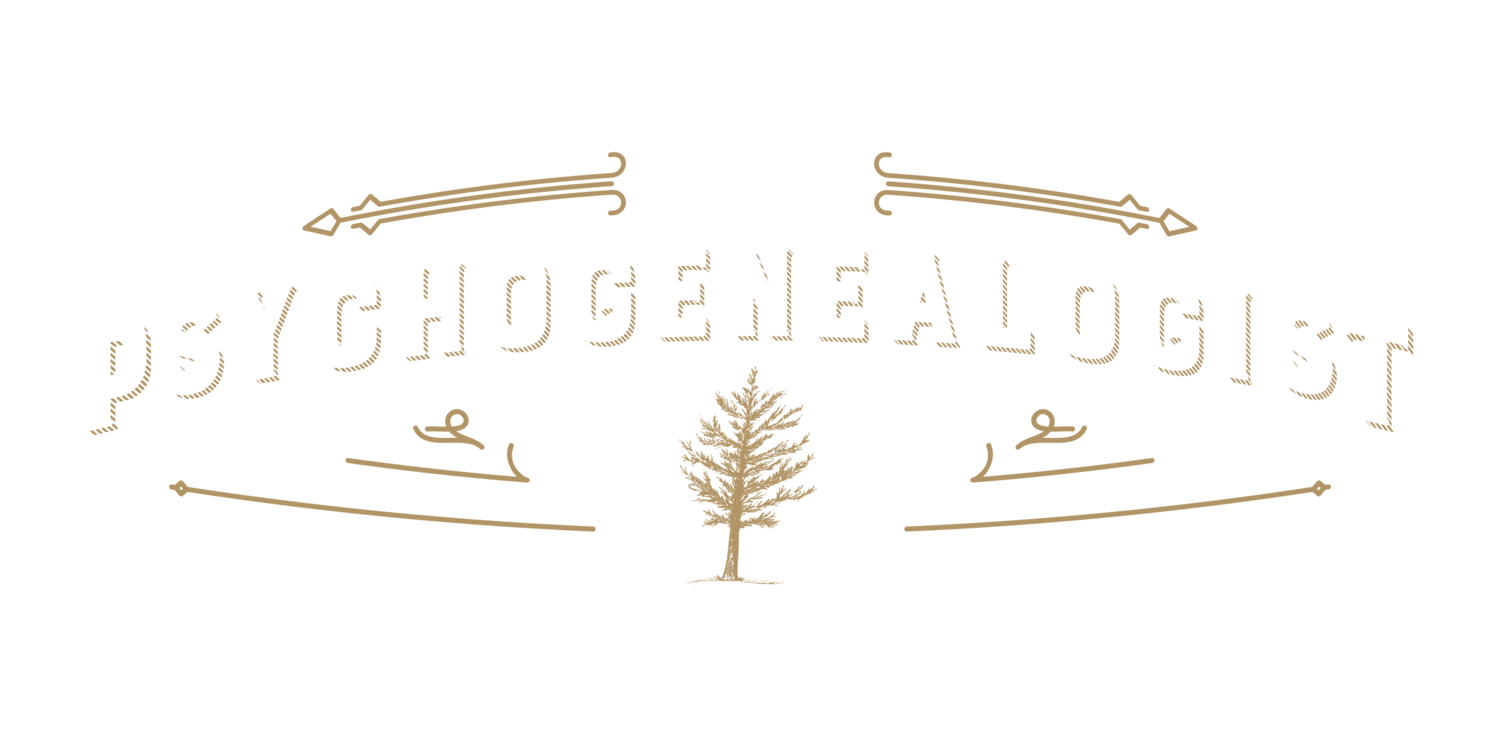My 2nd great grandfather, Henry Peter Ratz (1867-1934), was a butcher. Though, as you'll learn, perhaps not a very successful one.
I believe this is the newspaper clipping from the Calumet News on July 2, 1898 announcing the opening of his shop in Houghton, Michigan. Calumet is about 20 miles northeast of Atlantic Mine, MI on the Keweenaw Peninsula in the the Upper Peninsula of Michigan.
Henry married my 2nd great grandmother, Fannie (Schmidt) Ratz (1870-1944) on October 26th, 1891 in Houghton, Michigan. They had my great grandmother, Alma Ratz (1894-1979), who married my great grandfather, Michael John Hanley (1890-1964).
Here is an early photo of Henry (right). He was identified by my great aunt Beverly (Hanley) Mansour (1929-2009). She was not able to identify the man on the left.
Henry Peter Ratz (right) 1867-1934
Here is a later photo of Henry, also identified by my Aunt Beverly:
"Grandpa Ratz center - playing cards with some men"
About 15 years ago some family members sat down with Aunt Bev to get more of the story. Here is what she had to say about her Grandpa Ratz:
"It seems that Grandpa Ratz had problems holding a job. He was a butcher. Mother [Alma (Ratz) Hanley] told me that when he came home from work that if he threw his knives down on the kitchen table that he had just lost another job. She said that the sound would make everyone’s heart drop and stomach hurt. I wonder if there were times she went to bed hungry because she always made sure we had plenty of food plus a snack before we went to bed. I remember what we called sugar sandwiches (Bread-butter-sugar sprinkled on top)."
And here is a short audio clip of Aunt Beverly talking to my dad about her grandfather Henry, with a rough transcription following:
"My mother, grandma Ratz, my mother’s side, her name was Schmidt [Fannie (Schmidt) Ratz]. And she had a lot of sisters, and I will get to her part after. But, she married Ratz [Henry], and he was really German. They both were, they came over. Both German sides came over [from Germany to Michigan].
Yeah, they went up north. Yeah, I think because a lot of the, I don’t know if it was mining or what brought them up there. But, he was a butcher. He was very irregular when he worked too.
Schmidt or Ratz? (interviewer clarifying)
Ratz [Henry] was a butcher. Grandma, she had a lot of sisters, but lets go back to the Hanleys. I will catch up with the Ratzes."
The "Schmidt" referred to here is my 2nd great grandmother, Fannie, seen here.
Fannie (Schmidt) Ratz ( 1870-1944)
As I pull together all of the puzzle pieces, a picture emerges of my 2nd great grandfather's professional struggles. In searching through several archival newspaper databases I came across this article in the Alpena Evening News on February 7th, 1900.
The article describes a "Peter H. Ratz" (first and middle names are reversed) going into a voluntary bankruptcy. I guess even the "choicest meats" were not enough to keep him in business.
Henry lived another 34 years after this bankruptcy. There is more to the story that I hope to uncover. Did he continue to work? What did he do? Given his professional struggles how was he viewed by others in the family?
There is no one alive today who could tell me these stories first hand. But that won't keep me from trying to find the and share them.
Last week I went to a family funeral in Flint, Michigan. The burial was at the New Calvary Catholic Cemetery and this was first visit there that I could recall. The Aunt Bev that you hear above is buried there, as well as several other family members.
A cousin helped me locate Fannie and Henry's burial site. Here is their gravestone:
Fannie and Henry Ratz - New Calvary Catholic Cemetery - Flint, Michigan
As I stood there for the first time it struck me that Henry was born a few years after the Civil War ended and a few years before World War II started. I wondered what his life was like. And, I was happy to know that I was piecing a small bit of it together to share with my family.
Another cousin told me that he had visited this site earlier in the summer. Apparently there was a nest of bees buried in front of the stone. The nest had since been removed, but you can see the hole that it left in its place.
I keep thinking there is some sort of symbolic meaning of the bees nest, but I haven't come up with one yet. Perhaps as I learn more of the story one will emerge.
What do you think?
I hope you liked reading about my 2nd great grandfather Henry Peter Ratz (1867-1934). If you did, please consider sharing his story with those in your life who might enjoy it. Also, feel free to join The Psychogenealogist email list to get all of the most recent updates.






